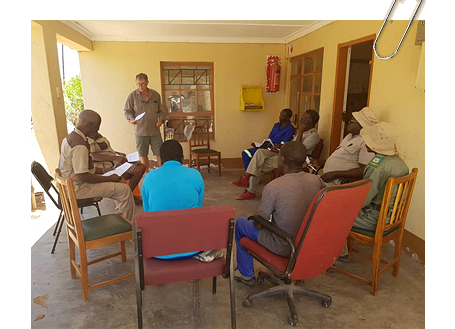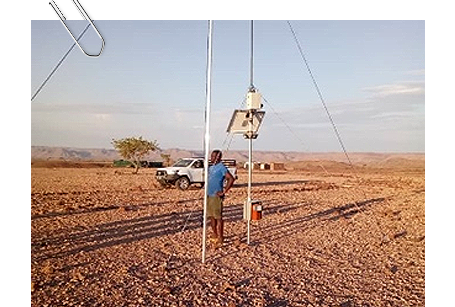Working to keep lions in the Kunene
The past six month were characterized by a prolonged and crippling drought in the Kunene Region. The socio-economic impact on local farmers and residents within this area cannot be underestimated. Subsistence farmers who were living hand to mouth have lost vast amount of stock due to drought in the region. The situation is compounded by lions and (other predators), struggling to find prey and taking livestock. Both farmers and livestock are being forced into areas they would not normally occupy, and the resultant conflict is inevitable.
IRDNC’s Human Wildlife Support Team has supported the community with the implementation of the Early warning system thereby, reducing losses of livestock and lions. Our team has maintained a steady presence in the hardest struck areas and, cemented critical relationships with farmers, community members and traditional leaders.
Our work to maintain the critical population of lions in the Kunene has focused on three immediate strategies:
- Increasing desert lion monitoring and data-sharing capacities
- Intensifying Human-lion conflict mitigation measures
- Increasing community-oriented human-lion conflict prevention efforts and benefit flows
Point one has certainly improved due to increased presence in the field of our team and also training and mobilization of community-based rangers or guards. The implementation of the Early Warning System has resulted in an increased number of collared individuals and the resultant movement data has increased monitoring coverage.
Point two, The Early Warning System Towers are manufactured and deployed in lion hotspot areas. The challenge here is to get more collars on key individual lions to improve the effectiveness of the system. Predator proof kraals are erected in this area. Our team have been very pro-active in assisting farmers to move livestock out of “danger” areas.
These three strategies are pivotal in the long-term conservation and viability of the desert lion population.
In the past two years (April 2018- March 2020), 45 community members were employed either by the conservancies or by IRDNC to address lion issues and problems. There were 263 incidents calls includes responses initiated by the early warning systems. Furthermore, during this period 239 cattle, 196 sheep/goats and 48 donkeys/horses were killed by lions in Kunene Lion hotspot area (Puros, Sesfontein and Anabed conservancies), and 27 lions were successfully collared for monitoring purpose. Despite the monitoring by the team, unfortunately 11 lions were killed in snare and gin traps whereas 3 lions were poisoned. The culprits were arrested and out on bail waiting for trial.
Challenges encountered
We have learned that it is not realistic to think our team can respond to each and every call-out, geo-fence violation or triggering of the Early Warning Tower (EWT). The area is simply too vast for this to be effective. Thus, our emphasis has shifted to training local rangers, guards and farmers as “first responders”. It has been difficult to collect any accurate data on this, but so far it seems very promising.
Increasing community-oriented efforts and involvement is dependent on building and maintaining relationships with multiple sectors of the communities. We have found that it is critical to have sound relationships with the regional and local government structures.
We are developing maps with information on geo-fence violations and Early Warning Systems (EWS) tower triggering events as a means of reporting and monitoring. Initial maps are promising and, need further work. We are also looking at developing a better way of monitoring and assessing effectiveness of responses to lion incidents.

- Training to Ministry of Environment, Forestry and Tourism staff and Community Game Guards on the use of and safety of fireworks as a tool when managing a human lion conflict incident.

- EW logger erected at Otjatjondjira, Anabeb



